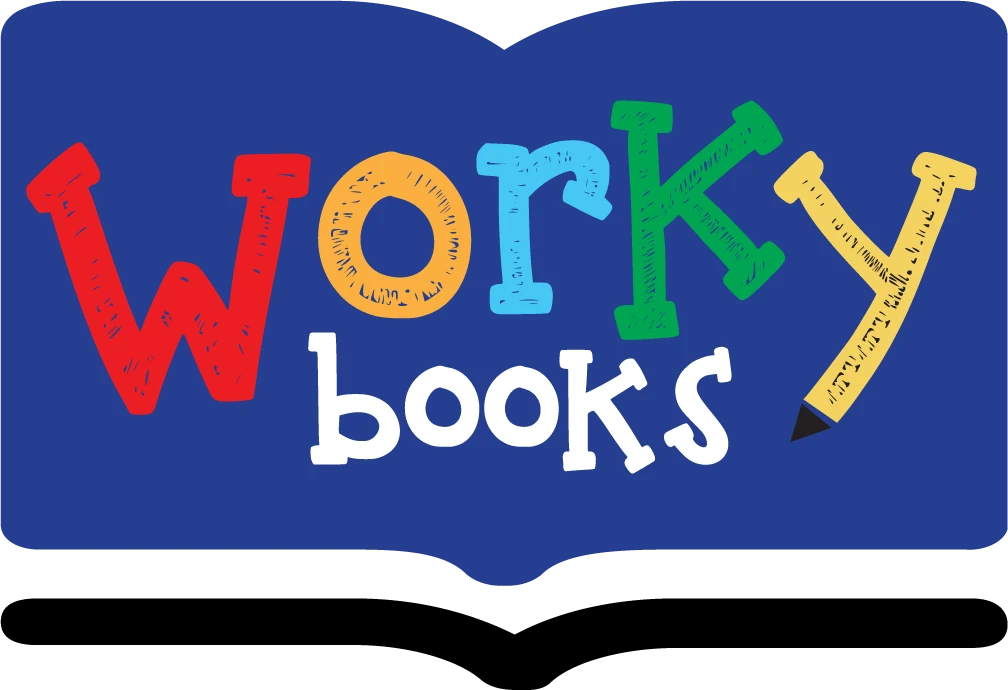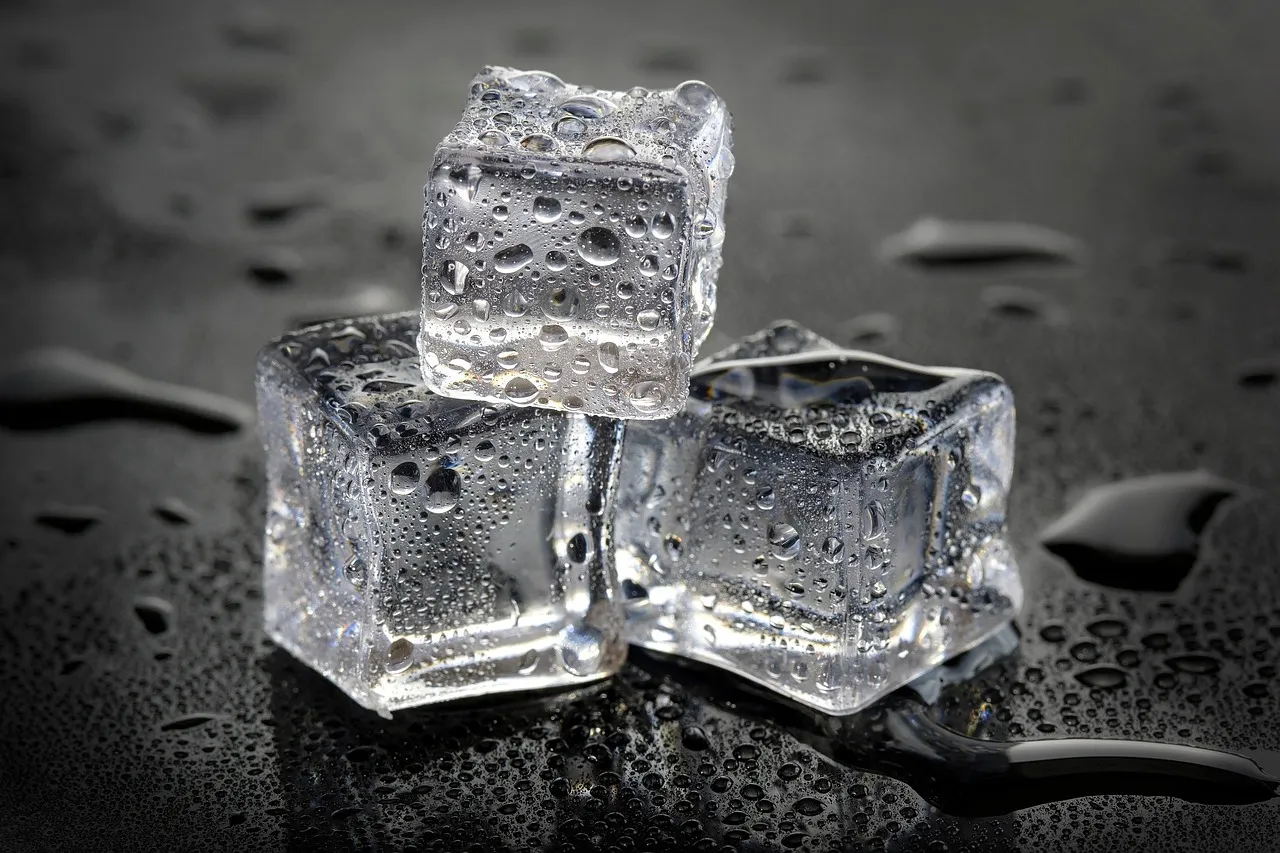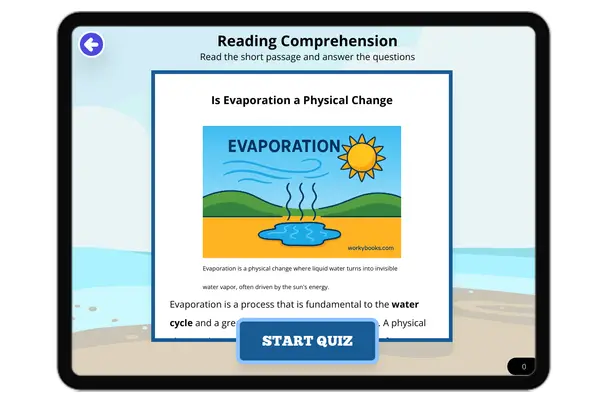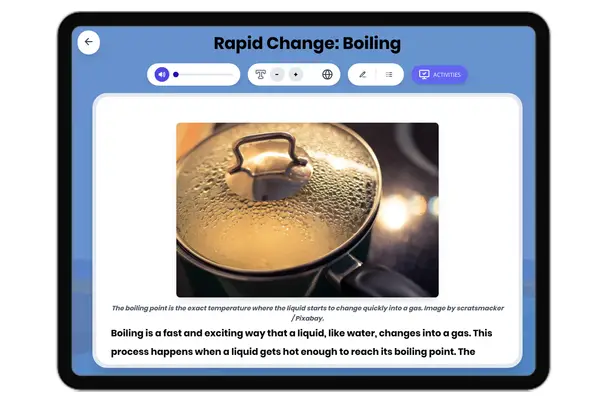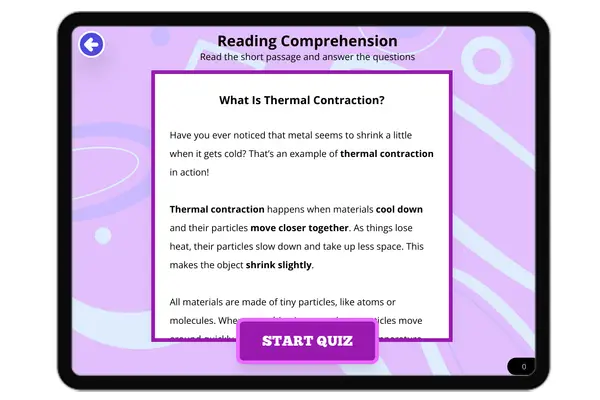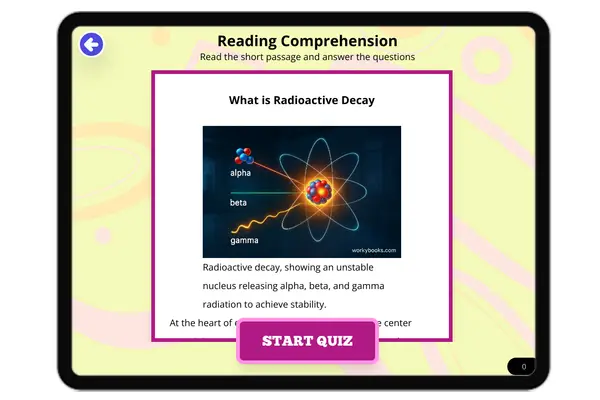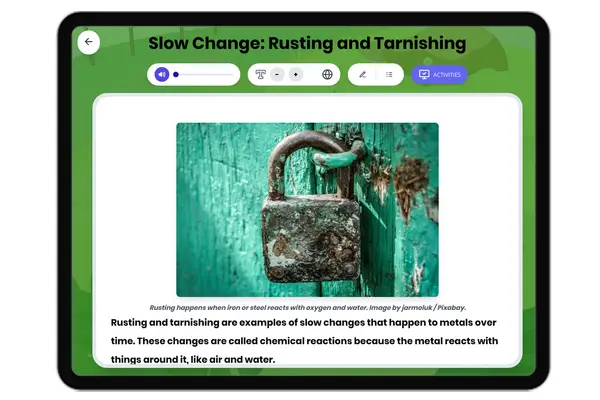Liquid to Solid: Freezing — Reading Comprehension
Premium Resource
Grades
- 3
- 4
- 5
- 6
PRINT+DIGITAL RESOURCE
This learning resource is available in interactive and printable formats. The interactive worksheet can be played online and assigned to students. The Printable PDF version can be downloaded and printed for completion by hand.
About This Reader
This science passage, aligned to NGSS standards for Grade 4-5, introduces students to the process of freezing. Readers will learn key scientific concepts such as how liquids turn into solids, what freezing means, and why temperature is important in this process. The passage defines important vocabulary like freezing point, matter, and molecules, using clear explanations and real-world examples like water turning into ice. Students can explore science in their daily lives by learning how the freezing process is used in making ice cubes, storing food, and understanding weather. The passage includes a glossary of key terms, a Spanish translation, comprehension questions, and writing prompts to deepen understanding. Audio integration supports different learning styles, and carefully constructed activities foster critical thinking about cause and effect in nature. This resource is ideal for teachers and students looking to build foundational knowledge about phase changes, with engaging activities and a focus on real-world applications.
Perfect For:
👩🏫 Teachers
- • Reading comprehension practice
- • Auto-graded assessments
- • Literacy skill development
👨👩👧👦 Parents
- • Reading practice at home
- • Comprehension improvement
- • Educational reading time
🏠 Homeschoolers
- • Reading curriculum support
- • Independent reading practice
- • Progress monitoring
Reading Features:
📖
Reading Passage
Engaging fiction or nonfiction text
❓
Comprehension Quiz
Auto-graded questions
📊
Instant Feedback
Immediate results and scoring
📄
Printable Version
Download for offline reading
🔊
Read Aloud
Voice-over with word highlighting
